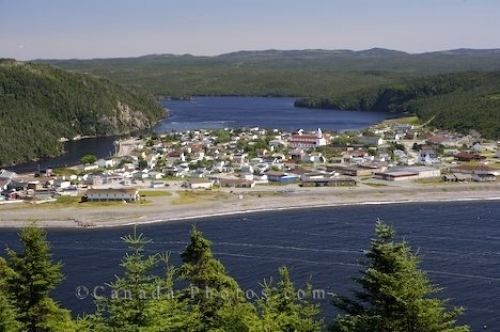Country Canada Website Official Town Website Area code Area code 709 Local time Tuesday 1:52 AM | Settled early 16th century Population 3,643 (2011) | |
 | ||
Weather 1°C, Wind NE at 8 km/h, 100% Humidity University College of the North Atlantic Placentia | ||
Placentia is a town on the Avalon Peninsula, Newfoundland and Labrador, consisting of the amalgamated communities of Jerseyside, Townside, Freshwater, Dunville and Argentia. Common family names include Caul, Power, O'Keefe, Collins, O'Reilly, Murphy, Williams, Gambin, Hatfield, Wadman, Lake, Barry, Mooney, and Careen.
Contents
Map of Placentia, NL, Canada
In the 2016 census, Placentia's population was reported as 3,496, down significantly from the 2001 figure of 4,426. This population decline has been ongoing since the early 1990s; in the 1996 census, Placentia was, proportionately, the 2nd fastest shrinking town in Canada, dropping from 5,515 to 5,013 between 1991 and 1996.
History
It is unclear when Placentia terrain was first settled by Europeans, but Basque fishermen were fishing in the area as early as the beginning of the 16th century, using Placentia as a seasonal centre of operations. The last will of a Basque seaman has been discovered in an archive in Spain in which Domingo de Luca asks in 1563 “that my body be buried in this port of Plazençia in the place where those who die here are usually buried.” It is believed to be the oldest original civil document written in Canada. Contemporary scholars think that land called Vinland extending from Nova Scotia to L'Anse aux Meadows consisted at least a few settlements, probably on Avalon Peninsula too. "Placentia" may be derived from a similar name of an old Basque villa called Placencia de las Armas (Basque: Soraluze), which is located in the Gipuzkoa province of the Basque Country. Placentia may also be derived from the Latin placentia, a name also probably given by the Basques. Placentia's large, rocky beach meant that fish could be salted and dried on the beachrocks rather than on a constructed wooden fishing stage, saving both time and effort.
In 1655, the French, who controlled more than half of the island of Newfoundland, and most of Atlantic Canada, made Placentia (French: Plaisance) their capital. They built Fort Plaisance in 1662, which was followed by Fort Royal in 1687, and Fort Saint Louis in 1691. The establishment of a fort with a garrison allowed fishermen to pursue their activities with greater safety in neighbouring harbours. The French garrisons at Plaisance were small, but despite that fact, the soldiers and French privateers managed to hold their own in the face of numerous English attacks during the two major conflicts of the Nine Years' War and the War of the Spanish Succession, which marked the colony's history. In 1692, Louis-Armand de Lom d'Arce de Lahontan, Baron de Lahontan defended the French port.
In 1711, the British almost annihilated the French at Placentia when a Royal Navy fleet under Admiral Hovenden Walker, containing over 15 ships, 4000 Redcoats and over 900 cannons, sailed into Placentia Bay, and then withdrew without reaching the settlement.
In 1713, the Treaty of Utrecht forced the French to abandon their Placentia Bay settlements and migrate to Louisbourg, and Placentia became a British possession. For a time in the 18th century, it still rivaled St. John's in size and importance, as evidenced by the future King William IV's summering at Placentia in 1786 and using it as his base of operations when acting as surrogate judge in Newfoundland. The town was described by the then-Prince as "a more decent settlement than any we have yet seen in Newfoundland" and was reported as having a population between 1500 and 2000 people. Considering that the population of Newfoundland was reported as 8,000 11 years earlier, in 1775, Placentia's relative size and importance becomes apparent.
By the 19th century, it was more fully eclipsed by St. John's and Harbour Grace, Placentia continued to be an important town, regional centre to the southern Avalon peninsula and the eastern Burin peninsula.
From the mid-18th century through to the 1830s, numerous Irish immigrants from Waterford, Wexford, Kilkenny and Cork settled in Placentia, so that the population of the modern town is largely of a mixture of West Country English and South-eastern Irish background. In the 18th century there were also a large number of settlers from the Channel Islands, from which Jerseyside, a prominent section of the town, derives its name.
In 1940, via an agreement between the British and American governments (Newfoundland not joining Canada until 1949), a large American military base was constructed at nearby Argentia (which is now within the town of Placentia's boundaries). For a time, this was the largest American military base outside of the United States, and it played an integral role in World War II, earning the nickname "the Gibraltar of the Atlantic."
This huge development revolutionized the Placentia area both economically and culturally. Essentially, the American base introduced a widespread cash-based economy. Suddenly, people who had fished all of their lives (engaging in a type of barter system called the truck system) had access to good-paying jobs on the American base. American technology enriched the living standards of Placentia residents, while the local culture was influenced strongly by the American presence. Similarly, it prompted a huge population boom, growing from 1,900 people in 1935 to well over 8,000 in the 1960s (note: these figures account for the current boundaries of Placentia, which at the time consisted of 4 separate towns: Placentia, Dunville, Jerseyside, and Freshwater).
The post office was established in 1851. The first Postmistress in 1863 was Mary Morris.
Ecclesiastical History
From 16 September 1870 it was the seat of the Catholic pre-diocesan Apostolic Prefecture of Placentia, but instead of becoming a diocese it was suppressed in 1891, its territory being merged into the Diocese of Saint John’s, Newfoundland.
